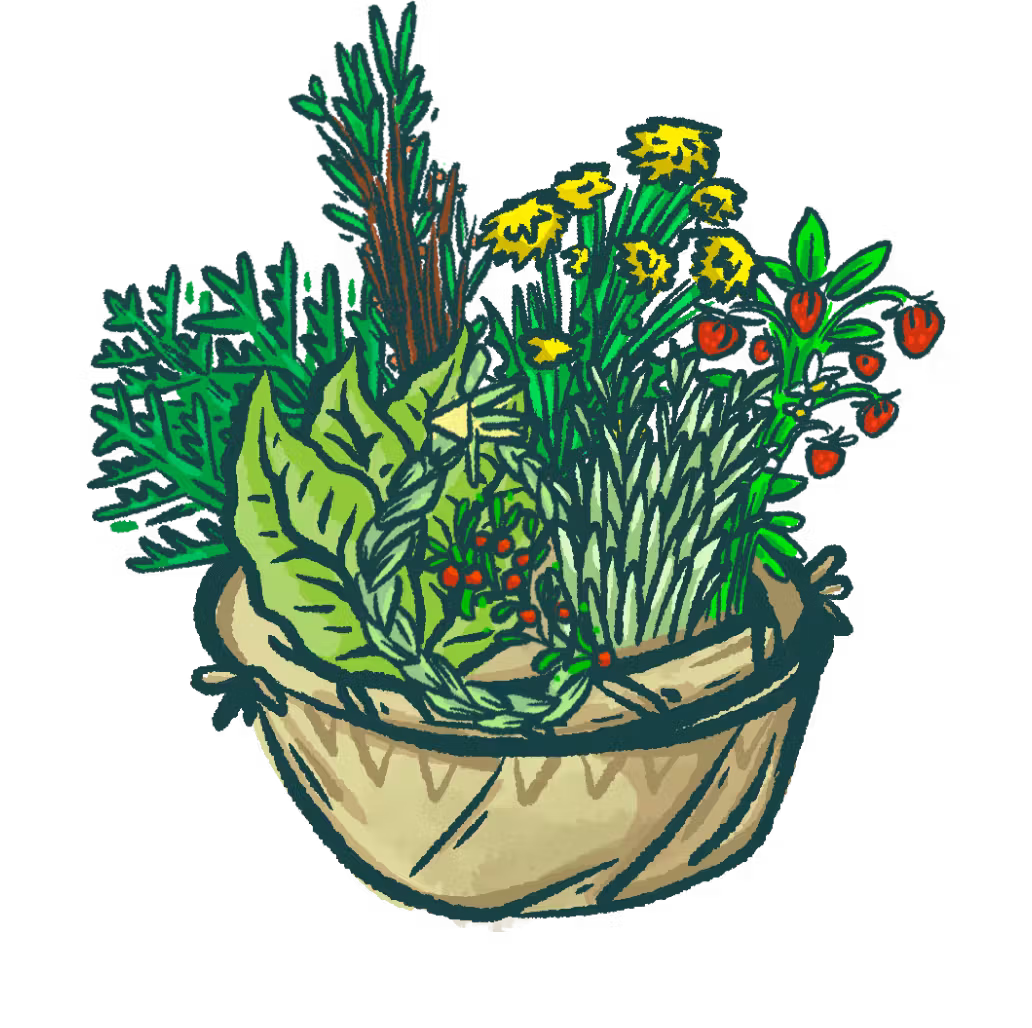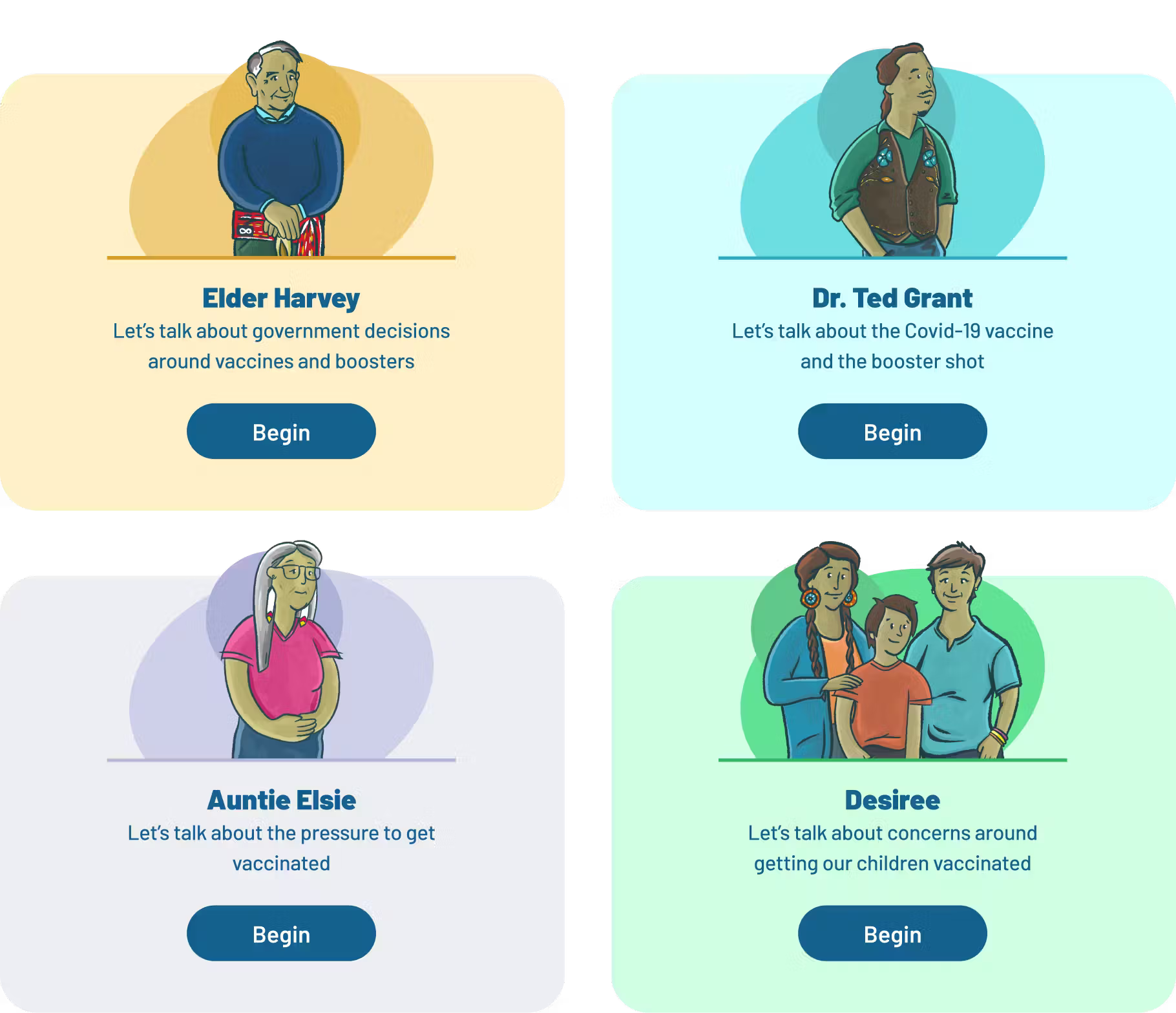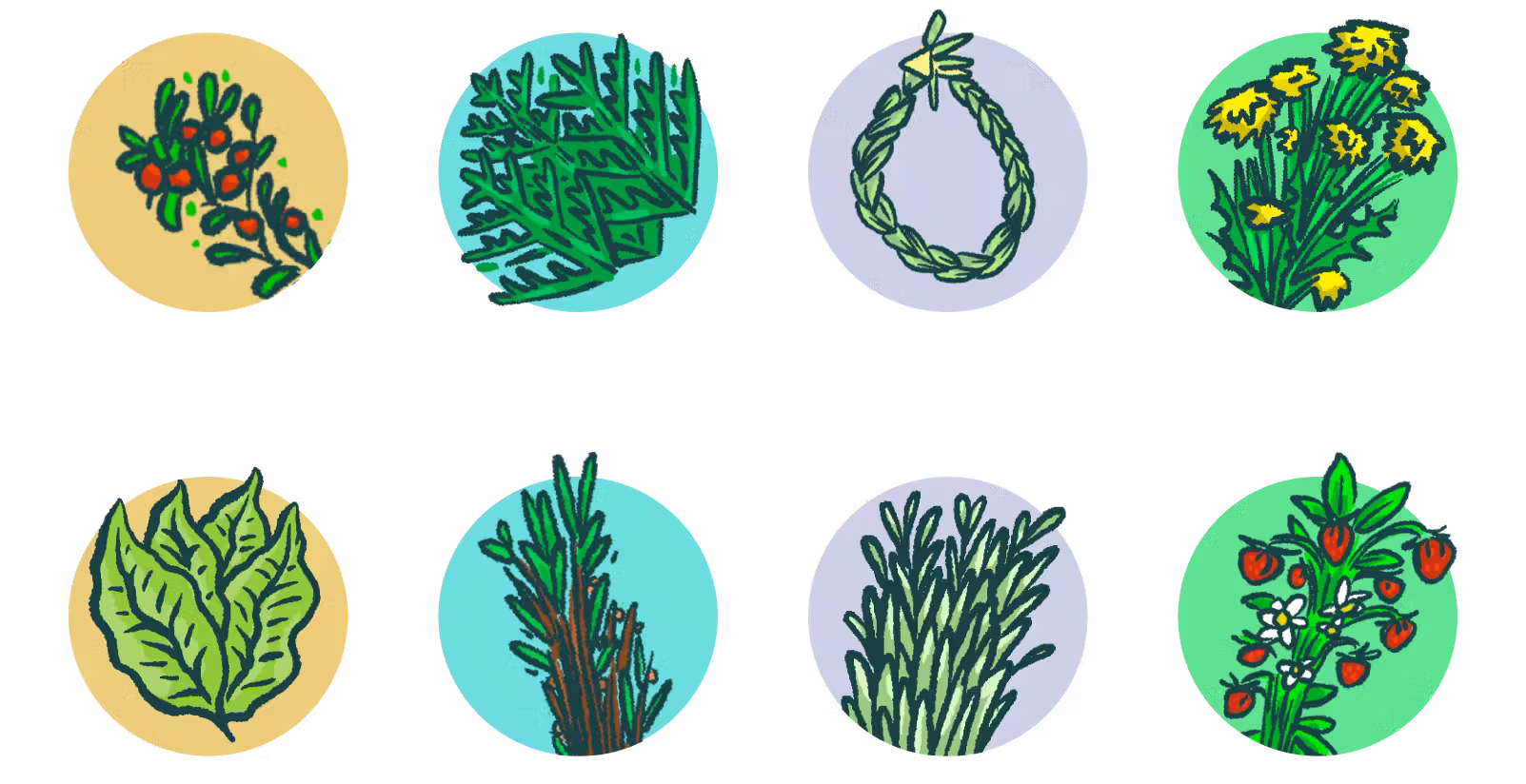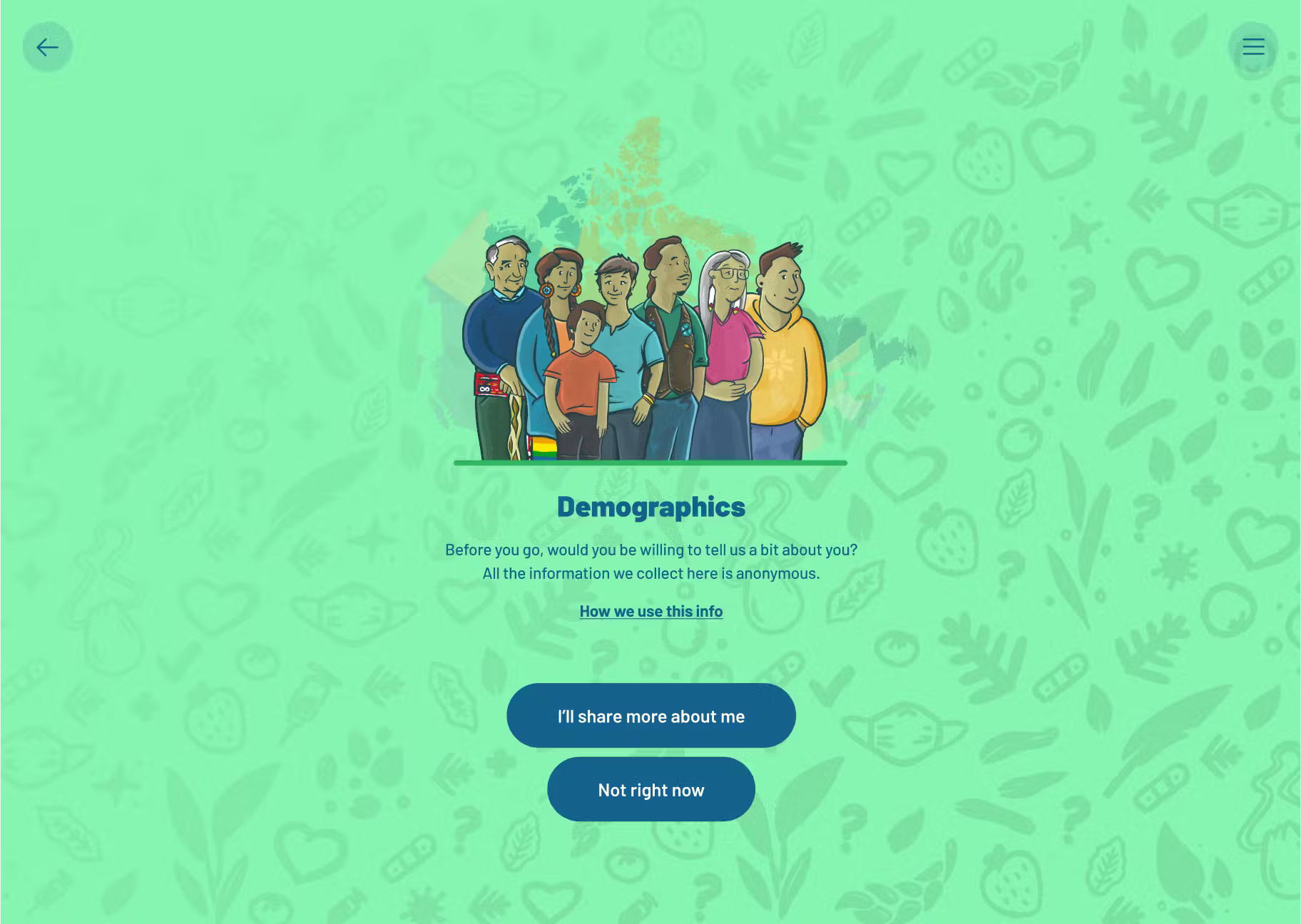The Product
Our Medicine Path is an online engagement platform for learning, sharing, and understanding Indigenous perspectives and experiences with vaccinations across the life course in Canada.
Users can access the tool by visiting a web address on their phone, tablet, or computer. They will explore misinformation narratives and drivers of vaccine hesitancy within Indigenous communities, as told through Indigenous voices. The game adopts a storytelling approach through which users receive helpful information about vaccines from trusted Indigenous sources and are encouraged to share their own views and experiences.




